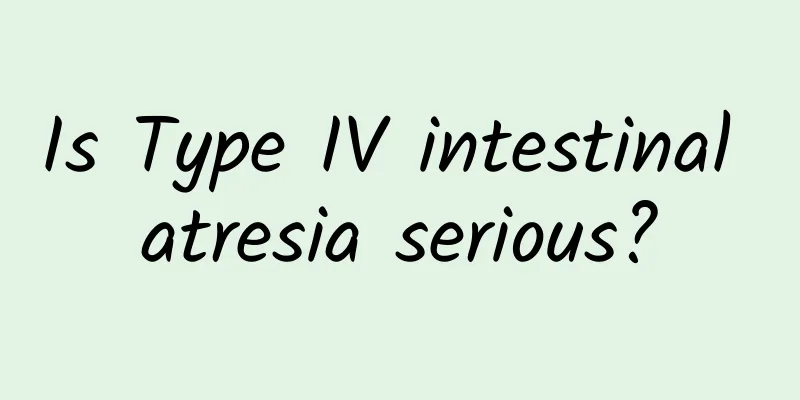Is Type IV intestinal atresia serious?

|
Type IV intestinal atresia is a severe congenital intestinal malformation that requires prompt surgical treatment to avoid life-threatening conditions. This disease is usually discovered in the neonatal period and manifests as vomiting, abdominal distension, and difficulty defecating, and requires imaging examinations to confirm the diagnosis. 1. Genetic factors Type IV intestinal atresia may be related to heredity, and certain gene mutations or family history may increase the risk of the disease. Although the specific mechanism is still unclear, genetic counseling during pregnancy and prenatal screening can help early detection. 2. Environmental factors Exposure to certain harmful substances or infections during pregnancy may increase the risk of type IV intestinal atresia in the fetus. Pregnant women should avoid exposure to chemical toxins, radiation, and certain viruses and maintain a healthy lifestyle. 3. Physiological factors Type IV intestinal atresia may occur when the intestines of the fetus develop abnormally during development. This abnormality may be related to insufficient blood supply to the intestines or other problems during embryonic development. 4. Pathological factors Type IV intestinal atresia is a serious intestinal malformation that may be accompanied by other congenital anomalies, such as heart defects or urinary system problems. Early diagnosis and comprehensive treatment are key. Treatment includes surgical repair and postoperative care. 1. Surgical treatment Surgery is the only effective method for treating type IV intestinal atresia, which usually includes intestinal resection and anastomosis, ostomy or intestinal reconstruction. The specific surgical method is determined according to the child's condition. 2. Postoperative care After surgery, the child's vital signs need to be closely monitored to prevent infection and complications. Nutritional support is very important and may require intravenous nutrition or special formula feeding. 3. Rehabilitation management Long-term follow-up helps evaluate the child's growth and intestinal function. Physical therapy or nutritional adjustments can be performed when necessary to ensure the child's healthy growth. Type IV intestinal atresia is a serious disease that requires timely intervention. Parents should pay close attention to the symptoms of newborns and seek medical treatment in time. Through scientific treatment and care, most children can return to normal life. |
<<: Is cervical hypertrophy a sign of intrauterine adhesion?
>>: What are the symptoms of cervical hypertrophy in women?
Recommend
Can I get pregnant with adenomyosis? How to treat it?
Can you get pregnant with adenomyosis? How to tre...
Experts talk about the treatment of Trichomonas vaginitis
Trichomonas vaginitis is a disease caused by exte...
What is the normal progesterone level at 5 weeks of pregnancy?
The normal value of progesterone at 5 weeks of pr...
How to prevent premature menopause in women
How to prevent women from premature menopause? Me...
Say goodbye to male beer belly: inject testosterone to lose weight
Many men develop beer bellies as they age due to ...
Study: It’s not your fault that you can’t lose weight! The key is...
"Cell" published a study conducted at t...
What harm does uterine fluid cause to women?
The uterus is a female reproductive organ. If it ...
Madonna's unique slimming diet is high in grains and low in meat
Although she is already a woman in her 50s, Madon...
What are the key points to pay attention to in preventing vaginitis?
The frequency of vaginitis has become increasingl...
Is chronic cervicitis in women contagious? What are the effective treatments for chronic cervicitis in women?
Women need to pay great attention to gynecologica...
Want to be even thinner? Too much weight can easily lead to osteoporosis
Girls who only want to lose weight should be care...
4 fat burning superstars! Two-week rapid weight loss tips
June is the graduation season and also the peak w...
What harm does uterine fluid cause?
The uterus is a product of cervical inflammatory ...
Break the weight loss bottleneck! Eat protein to increase metabolism
During the weight loss period, you will definitel...
Party spit! The Blue and Green parties have their own opinions on the issue of Clenbuterol
The issue of clenbuterol continues to fuel politi...









